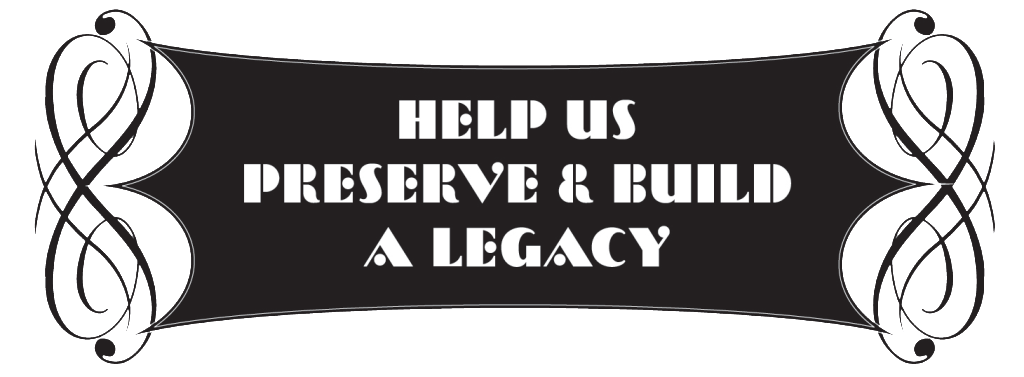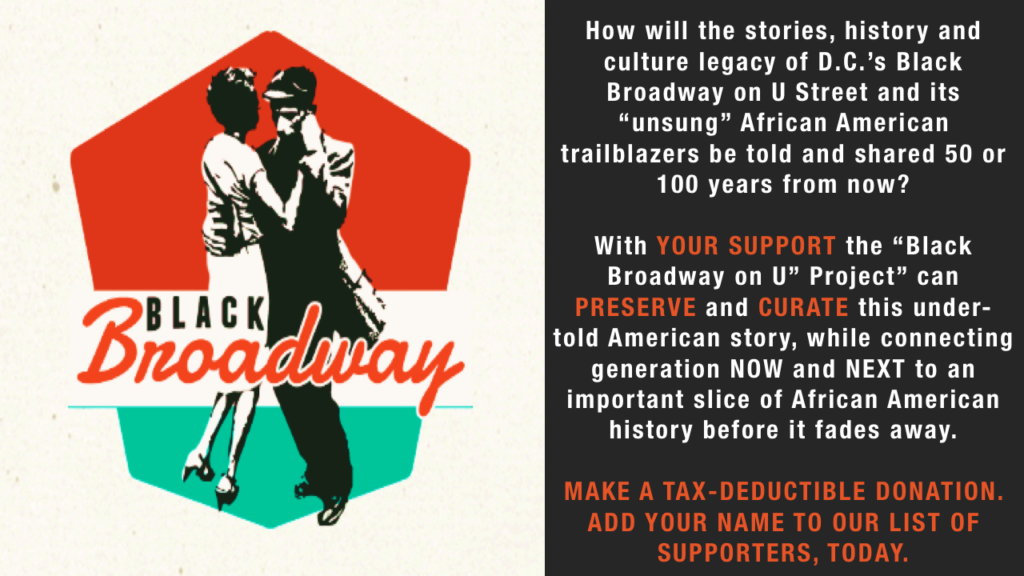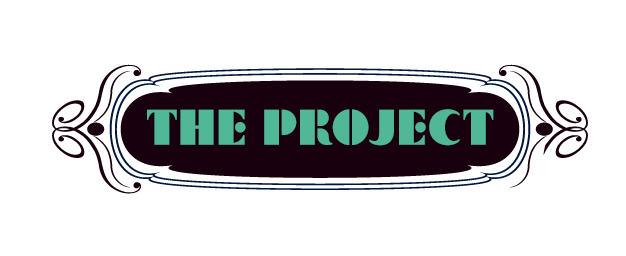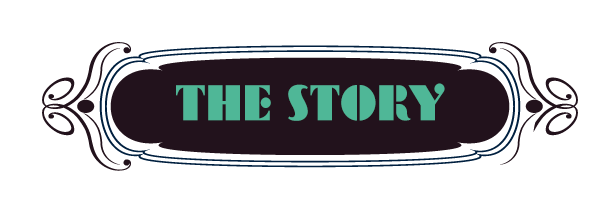Black Broadway on U: A Transmedia Project
The multimedia story of D.C.'s Black Broadway era before Harlem
In February 2014, the Black Broadway on U: A Transmedia Project was launched to shape the narrative on the under-told cultural legacy of the historic Black greater U community, a “city within a city” that once served as a significant symbol of black achievement and racial progress amid segregation and political tension in America. Through the use of digital media content, oral histories, stories and mapping this multi-platform project will connect today’s and future audiences to the “hidden” contributions of D.C.’s Black Renaissance and shed light on the “unsung” social, economical, historical and cultural influence and civic impact of this Black U Street community on Black America and America at large when it was known as “Black Broadway.”
This Transmedia story represents several distinct, yet interconnected multi-platform (digital media and immersive) and interactive components to include: a 3-part documentary film series, an interactive website (that will house a “living, digital history book and virtual museum”) featuring immersive user experiences, historic maps, educational resources, oral histories and documentary shorts showcasing the backstories of the social impact and cultural legacy of this neighborhood; its trailblazers, iconic entertainers and landmark places), mobile app, “pop-up” performances, community outreach events and symposiums, museum and cultural arts center as well as a significant social media engagement.
At the dawn of the “early 20th century” for some, life was but a Gatsby-like dream…but in the little southern town of Washington, D.C., otherwise known as “The Capital of the Free World,” it wasn’t Freedom that ruled; it was Jim Crow. As our nation’s capital was still a segregated city, African Americans were not “free” to enter “white” theaters and nightclubs. Ironically, it was this very segregation that spawned a “cultural and intellectual revolution.” The epicenter of this evolutionary era was the U Street Corridor, and it became known as D.C.’s “Black Broadway.”
If Black Washingtonians wanted to enjoy a fine dining experience, host social events or see live performances in D.C., they would have to provide their own entertainment and their own venues. And that they did! Black entrepreneurs answered the call by boldly opening clubs, restaurants, civic associations and other businesses along the U Street Corridor, not far from Howard University. The U Street Corridor was THE intellectual, business, cultural and social hub of black D.C. These new clubs, their rich luxurious sound and the impeccably dressed patrons who frequented them, defined this community.
On any given night, native Washingtonian Duke Ellington, as well as, Pearl Bailey, Cab Calloway, Ella Fitzgerald, Sarah Vaughan, Louis Armstrong, Billie Holliday and many others, gathered to perform on “D.C.’s Black Broadway,” (a moniker that Bailey is credited with coining). This proud African American community of artists, entertainers, business owners, educators, and intellectuals helped to shape America’s (and the world’s) tastes in culture and entertainment. The influences of D.C.’s transformative black renaissance, and its views concerning education, race and political policy, are still being felt today.
-
EDUCATE and ENTERTAIN today’s and future generations about the broad civic, economic and social contributions and important role this historic greater black U Street community played in shaping American history, arts and culture, as well as our society at large through civic and community engagement, public dialogue, multimedia, creative placement, social media and educational resources that allow deeper exploration in new and exciting ways.
-
ENGAGE and ENLIGHTEN the African American community and greater audiences through the “first hand” oral histories and “authentic” stories told through an “unfiltered” lens, memories and voices of the black community as opposed to just “historians” about the significant influence of D.C.’s greater Black U Street community to provide them an opportunity to define their own cultural identity and legacy as well as instill civic pride.
-
EMPOWER the African American community and address the prevalent and growing need to inspire generation now through the teaching, learning and sharing of their black cultural legacy to ensure they garner a deeper, more meaningful cultural identity, civic pride and appreciation of their rich heritage, history and humanities amid today’s civic and cultural discourse within urban America.
-
PRESERVE and CURATE this African American community’s “unsung and hidden” civic and cultural contributions that lie beneath the surface in one of the most powerful cities on the planet, Washington, D.C., which has been traditionally under-represented in the classroom and mainstream media.
-
CELEBRATE and REVIVE this Black Cultural Renaissance within D.C.’s U Street/Shaw corridor thus amplifying the importance of awakening civil engagement and cultural innovation within the community and our society at large for generation NOW and NEXT as well as for visitors to the city.
-
RELEVANCE: We believe this history is important to building community and cultural understanding of D.C.’s historic greater U Street/Shaw corridor of today.








